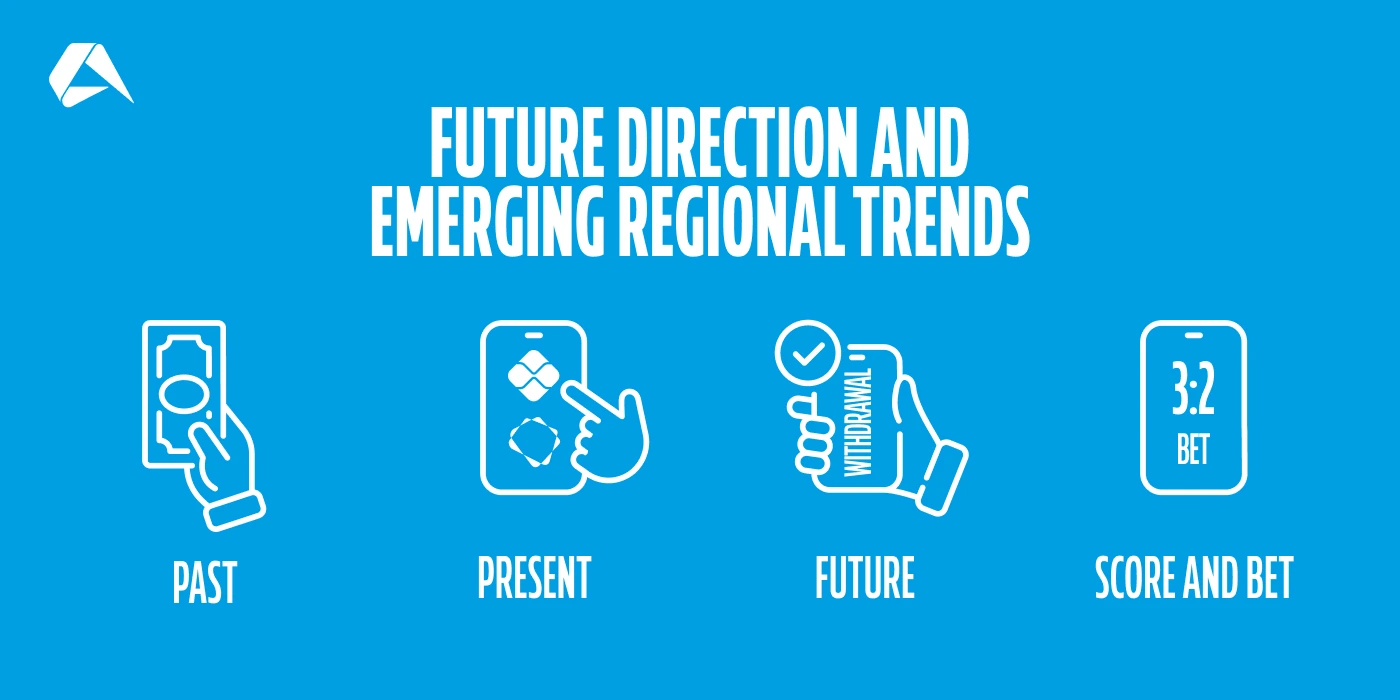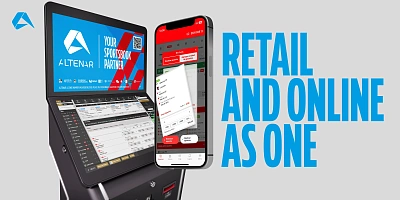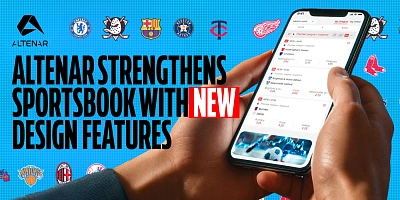Overview Local Payment Preferences in LatAm
Latin America is quickly becoming one of the fastest-growing regions for iGaming globally, yet success is dependent on building the right local payment stack. Bettors have firmly localised expectations, meaning methods common in Europe or North America often fall flat. Payment localisation is essential because many players either lack access to or do not trust international cards. In Brazil, for example, only an estimated 30% of adults have credit cards enabled for international use.
The LatAm market is highly fragmented; there is no universal payment mix. Operators must recognise local systems like Pix in Brazil, the dominant instant digital bank transfer system, SPEI in Mexico, and PSE in Colombia. Cash-based payments, such as Oxxo and Efecty, remain vital for unbanked segments.
Key trends include the rapid migration to mobile-first payments and the rising demand for faster withdrawals. Getting payments right is one of the most powerful levers for boosting conversion, loyalty, and player trust. Operators must partner with specialists to deliver a localised payment experience that adapts as trends shift.
Read the full blog below for more details on building a localized payment stack in Latin America.
How to Build the Right Payments Stack in 2025
Latin America has become one of the fastest-growing regions for iGaming in the global market. However, success in this continent depends on more than attractive odds or local branding. One of the most common stumbling blocks for new operators is payments. Bettors across Latam markets have firmly localised user expectations when it comes to deposits and withdrawals. Therefore, methods that typically work in Europe or North America will invariably fall flat in this part of the world.
Understanding what players actually use and how those habits are changing is essential for anyone looking to grow in South America.
Why Payment Localisation Matters More in LatAm
When European operators approach the Latin American market for the first time, many underestimate the importance of local payments to the player experience. In parts of Europe, bank cards or international e-wallets dominate online spending. In Latin America, the picture is entirely different and far more fragmented.
Many players in this region either do not trust international cards or lack access to them. In Brazil, for example, only an estimated 30% of adults have credit cards enabled for international use. Across other key markets such as Mexico, Colombia and Peru, the numbers are similar or lower. As a result, local bank transfers, cash vouchers, and instant-pay schemes have become everyday tools for online transactions.
For sportsbook operators and casino platforms, this presents both a challenge and an opportunity. Simply replicating a European or North American payments stack will not work here. Players expect to see familiar, trusted local brands at the point of deposit, whether that means Pix in Brazil, SPEI in Mexico, or PSE in Colombia.
For gaming operators, this means that getting payments right is one of the most powerful levers for boosting conversion, loyalty, and retention in Latam markets. It also plays a huge role in player trust. Therefore, those who localise intelligently from day one will see a faster time-to-revenue than those who don’t.
No One Size Fits All Payment Approach
It’s easy to look at Latin America on a map and think of it as one market. But in reality, payments are highly fragmented, traditionally shaped by local systems, consumer habits, trust factors, and even regulatory environments.
In Brazil, for instance, digital bank transfers now account for the majority of day-to-day transactions. In Mexico, players still lean heavily on a mix of bank transfers and cash-based payments, particularly among more casual bettors. Colombia, meanwhile, remains a market where many players still rely on physical cash-in networks or trusted intermediaries. Elsewhere in the region, from Peru to Argentina, operators must accommodate a mix of cash, local bank transfers, and mobile-first payment trends.
Even within countries, preferences can vary by region, landscape and by demographic to further complicate the issue. Younger, mobile-first bettors expect different options than older or less digitally connected players. That means one thing. There is no universal payment mix in Latin America. Success comes from treating each market, and often each segment, as a separate opportunity that demands local insight and expertise.
Top Local Payment Methods That Work
Payment preferences vary sharply across Latin America. The table below highlights the top methods players use today and the options operators should consider for each market.
Preferred Local Payment Methods by Country
| Country | Bank Transfers | Cash Payments | Mobile Wallets | Cards & Other Methods |
|---|---|---|---|---|
| Brazil | Pix | Boleto Bancário | — | Local debit cards |
| Mexico | SPEI | Oxxo | Mercado Pago | Local debit/credit cards |
| Colombia | PSE | Efecty | Nequi, Daviplata | Local debit cards |
| Peru | SafetyPay | PagoEfectivo | Yape, Tunki | Local debit cards |
| Chile | WebPay, Servipag | CajaVecina | MACH | Local debit/credit cards |
| Argentina | RedLink, Banelco | Rapipago, Pago Fácil | — | Local debit cards, Informal intermediaries |
| Uruguay | Banred | RedPagos, Abitab | — | Local debit/credit cards |
| Ecuador | Banco Pichincha transfers | PagoEfectivo, SafetyPay | — | Local debit cards |
| Bolivia | Banco Unión transfers | Tigo Money, PagoNet | — | Local debit cards |
| Paraguay | Bancard transfers | Aquí Pago, Practipago | — | Local debit cards |
| Panama | ACH Panama | — | — | Clave, Visa/Mastercard (domestic) |
Brazil
Brazilian players are resoundingly comfortable with instant digital payments, which have rapidly overtaken older cash-based or card-driven methods in recent years.
Pix dominates the market.
Introduced by Brazil’s Central Bank in 2020, Pix is a real-time bank transfer system that allows instant, 24/7 payments between accounts. It is free to use, mobile-friendly, and deeply trusted by consumers, with over 70% of Brazilian adults now using Pix on a regular basis. For betting operators, Pix offers unmatched conversion rates thanks to its speed and simplicity.
Local debit cards
These options also remain in use, particularly for players accustomed to card payments. However, many local cards are not enabled for international transactions, making it essential to support domestic routing.
Boleto Bancário
Once a primary payment tool, the use of Boleto Bancário has seen a significant decline since the emergence of Pix. It is still used in some cash-reliant segments, but no longer plays a dominant role in online betting payments.
Mexico
Mexican players generally show diverse payment habits, with a strong split between bank transfer systems and cash-based vouchers, both of which remain vital for capturing a wide audience in Mexico.
SPEI (Sistema de Pagos Electrónicos Interbancarios)
SPEI is the national real-time bank transfer system. It is widely adopted by Mexican players for online betting thanks to its speed, low cost, and compatibility with most major banks. SPEI supports both desktop and mobile interfaces, making it a trusted option for sportsbook deposits.
Oxxo (Cash Voucher)
Oxxo is a nationwide cash voucher system linked to the popular Oxxo convenience store chain. Players generate a voucher online, then pay in cash at any Oxxo store. Though slower than instant methods, Oxxo remains vital for serving unbanked and cash-reliant players, especially outside major urban centres.
Local debit and credit cards
Some players use these options, but card penetration and trust levels are significantly lower than in Europe. Many cards also carry restrictions for gambling-related transactions, making alternative methods more effective for conversion.
E-wallets
E-wallets are gaining ground, particularly among mobile-first players, but adoption remains moderate compared to the dominance of SPEI and Oxxo.
Colombia
Colombia remains a market where cash-based payments are still prevalent, although digital methods are steadily gaining ground among younger and urban consumers.
PSE (Pagos Seguros en Línea)
In Colombia, PSE acts as the national gateway for online bank payments. It links players directly to their banking apps or online banking portals, enabling one-time payments without the need for cards. While highly trusted by those with bank accounts, uptake and usage tend to lean toward urban bettors and more digitally engaged segments of society. Outside major cities, penetration for bank transfers remains lower than in markets like Brazil.
Efecty
By contrast, Efecty remains an essential bridge for the unbanked or cash-first population. With thousands of retail points nationwide, Efecty allows players to fund their accounts in cash while maintaining privacy and control, a factor that still holds significant cultural weight in Colombia’s betting community.
Mobile wallets
E-Wallets such as Nequi and Daviplata are gaining momentum, particularly among younger users, but have much more ground to cover before they can displace the dominance of PSE or Efecty in market share.
Other LatAm markets
Outside the largest LatAm markets, operators typically encounter a more fragmented and changeable landscape for iGaming payments, particularly in countries like Peru, Chile, and Argentina. Each of these countries presents additional challenges around currency stability, banking infrastructure, and local consumer habits.
Peru
Cash remains a vital part of the economy in Peru, particularly outside Lima. Players often rely on cash-in networks and payment agents, though bank transfer systems are gradually expanding. The Peruvian government is also exploring a new instant transfer system modelled on Brazil’s Pix, which could reshape the market in the coming years.
Chile
In Chile, online bank transfers are the most popular payment method among consumers with bank accounts, while casual or rural bettors still use cash vouchers. Furthermore, mobile wallet adoption is on the rise, which, like in many other regions, is driven by younger demographics and increasing smartphone penetration.
Argentina
Argentina is a highly complex market. Persistent inflation, currency controls, and economic instability create difficulties for both players and operators. Many online bettors rely on informal intermediaries or workarounds, while those with stable bank access favour local debit cards or bank transfers. Trust remains a key issue in Argentina. Operators must provide payment options that feel secure and reliable in this volatile environment.
The Difference Between Payment Expectations for Sports Betting and Casino
Many LatAm platforms now offer both sports betting and casino games, and player payment expectations often differ between the two. Understanding these differences can help operators enhance deposit flows and conversion rates.
Sports betting customers, particularly those active in live or in-play markets, show a clear preference for instant payment methods. Fast deposits are fundamentally important to the sportsbook experience, as players want to fund their accounts quickly and capitalise on shifting odds. Slow or time-consuming payments can result in lost bets and decreased engagement.
Casino players, by contrast, often display more varied behaviour. Many continue to use cash-based payments such as Efecty, PagoEfectivo, or Oxxo, particularly in segments where casino play is more casual. These players are generally more accepting of delayed funding and manual processes, seeing deposits as part of a relaxed entertainment habit rather than a time-critical factor.
At the same time, mobile-first users in both segments are driving broader adoption of digital wallets and app-based payments, especially in Colombia, Peru, and Chile.
For operators, tailoring payment options and flows to suit the preferences of each product audience remains a powerful way to improve conversion and player satisfaction across verticals.
The Migration to Mobile-First Payments in LatAm Markets
Across much of Latin America, mobile-first behaviour is no longer an emerging trend; it is fast becoming the default option. For operators entering these markets, understanding how this shift affects payment preferences is extremely important.
In markets such as Brazil, Colombia, Peru, and Chile, a large portion of the betting audience now primarily interacts through smartphones. Moreover, in many cases, players may never visit a desktop site. This mobile-first behaviour extends directly into how payments are made, meaning that players typically favour fast, app-driven transactions that fit naturally into their day-to-day mobile use.
Instant bank transfer systems such as Pix, SPEI and PSE, for instance, have seen rapid growth in part because they are mobile-native, designed from the start to work within banking apps or payment apps on smartphones. Similarly, digital wallets such as Nequi, Daviplata, and Mercado Pago are gaining market share because they offer fast and frictionless payments via mobile.
For operators, this shift reinforces the importance of mobile-optimised deposit journeys and payment experiences. Flows that feel awkward or poorly adapted to mobile can cause hesitation and ultimately drive players elsewhere in a competitive market.
Future Direction and Emerging Regional Trends

Across the region, payment behaviour is evolving fast, mirroring the broader iGaming boom now reshaping key LatAm markets. Operators planning their LatAm strategy would be well advised to look ahead beyond today’s picture.
The single most significant shift continues to be the rise of instant bank transfer systems, led by Pix in Brazil. The runaway success of Pix has inspired similar initiatives in other markets, with new real-time bank transfer platforms under development in Peru, Chile and Argentina. As these networks mature, they are expected to replace slower transfer systems and further reduce reliance on cash deposits.
At the same time, cash voucher payments, which were once dominant across much of the region, are starting to decline among more urban and digitally connected user groups. In Mexico and Colombia, for example, younger players now favour mobile-native options over visits to retail payment points. That said, cash networks will continue to play a significant role for the foreseeable future, particularly in rural areas and communities where access to banking remains limited.
Mobile wallets and digital-first payment apps are also gaining momentum, driven by younger demographics and increasing smartphone adoption. The likes of Nequi, Daviplata, Mercado Pago, and MACH are carving out a significant market share, and operators should expect further growth in this area.
Finally, one significant trend that is now being felt across the region is the rising demand for faster withdrawals. Players increasingly expect not only fast deposits but also quick access to winnings, notably, a standard set by modern e-wallets and instant payment systems.
As markets mature and player expectations evolve, payment flexibility and agility will become just as important as product or pricing for long-term success throughout South America.
How to Localise Your Payment Options in South America
For operators entering Latin America, payment localisation presents both an opportunity and a technical challenge. Players expect to see familiar, trusted local methods on offer. And if those options are missing, many will simply move on to a competitor. Integrating the right mix of payment methods on a local level is therefore essential, but implementation can become complex quickly.
Most operators will look to work with payment providers that specialise in the LatAm markets, bringing in PSPs who can offer local coverage in major markets within the region. However, the key is not just to integrate payment options, but to deliver a payment experience that feels natural to local players across both mobile and desktop.
It’s here that Altenar’s architecture delivers real value. Our platform is designed with multi-market flexibility at its core, supporting the integration with more than 220 different payment methods, including the most widely used options across Latin America, such as Pix, Boleto Bancário, SPEI, Oxxo, PSE, Efecty, and many others.
By working with regional payment partners and incorporating support for market-specific payment experiences, Altenar gives operators the ability to launch quickly with payment systems that align with player expectations. Just as important, this flexibility makes it easier to adapt as payment trends shift, such as when new real-time transfer platforms emerge in places like Peru or Chile.
For operators expanding into LatAm, getting payments right is one of the biggest drivers of player acquisition and retention.
LatAm payment preferences are changing fast. Is your platform ready? Book a personalised demonstration now and discover how your platform can deliver a local payment experience that today’s players expect, and tomorrow’s trends will demand.













